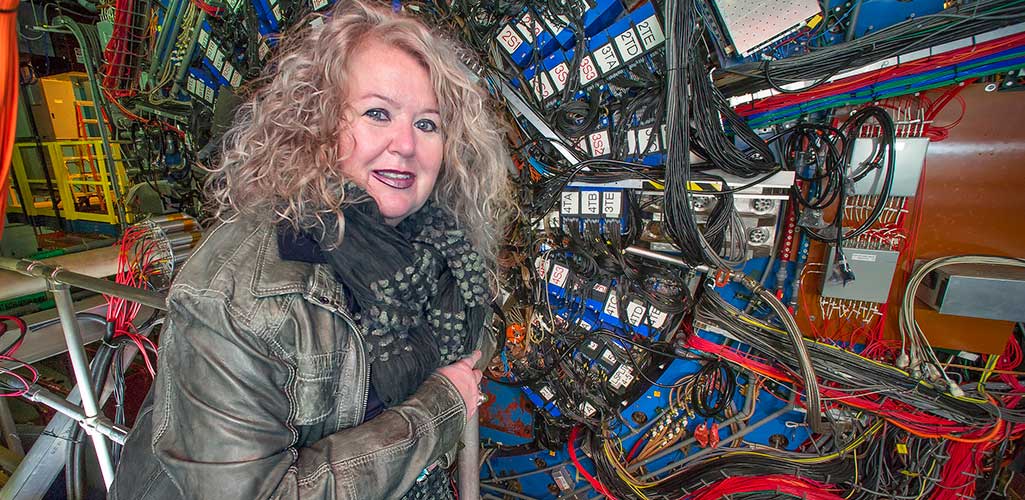Relativistic Heavy Ion Collider
Studying the building blocks of the visible matter as they existed at the dawn of time

The Relativistic Heavy Ion Collider (RHIC) is the only particle collider operating in the United States and the world’s only polarized proton collider. It incorporates many innovative accelerator technologies that enable ground-breaking research in nuclear physics. Many of these technologies have been adapted for other research programs at accelerators around the world. RHIC may also serve as the foundation for a new innovative facility, an Electron-Ion Collider.
To see how you can get involved with this facility, contact: Thomas Roser at (631) 344-7084
Basic Research
RHIC accelerates various ions (from protons to heavy nuclei such as gold) and collides them to create conditions that allowed scientists to discover and then explore a new state of matter formed by the free movement of quarks and gluons, the most fundamental building blocks of matter. This form of matter, called quark-gluon plasma, last existed microseconds after the Big Bang, the start of the universe. RHIC achieved record-breaking collision rates with novel beam-cooling techniques using high-frequency feedback technologies and by using intense electron beams to focus the colliding ion beams. The next generation of beam-cooling techniques are currently under development at RHIC, which will help to lay the foundation for a proposed future Electron-Ion Collider. Such an Electron-Ion Collider will allow a deeper exploration of the internal structure of the visible matter that forms our universe.
Applied Research
Many of the technologies developed for RHIC and its injectors have found applications. The high-quality low-energy heavy ion beams can be used for ion implantation in semiconductors or high-temperature superconductors. Compact accelerators for ion beams can be used for cancer therapy. Novel beam-focusing techniques using permanent magnet material—developed for next-generation beam-cooling systems—allows for the construction of very compact gantries that are used in proton-beam or ion-beam cancer therapy. Energy-recovery linacs, being developed for the Electron-Ion Collider, could have a number of applications, such as intense Extreme UV lasers for next-generation chip manufacturing or intense gamma beams for efficient medical isotope production.
.
Test Facilities and Expertise
The RHIC accelerator complex consists of high-intensity polarized proton and ion sources and seven state-of-the-art particle accelerators that employ forefront technologies such as high-field superconducting magnets, high-power radiofrequency (RF) systems, high-gradient superconducting RF systems, a large number of high-precision beam diagnostics systems, and a sophisticated control system using the world’s most extensive particle-beam-based feedback algorithm. The heavy ion beams from the RHIC injectors are used at the NASA Space Radiation Laboratory to simulate the environment experienced by astronauts and sensitive equipment in deep space. There are also test facilities for superconducting RF cavities and magnets.
Workforce Development
RHIC serves a unique role in helping to train the next generation of world-class nuclear physicists, accelerator physicists, and engineers. The RHIC accelerator facility has provided training to countless accelerator physicists and engineers in a wide range of accelerator technologies. RHIC also serves as a host facility for the Center for Accelerator Science and Education (CASE), run jointly with Stony Brook University. The CASE program, established in 2008, has graduated about 15 students so far with about 5 more currently enrolled, plus 3-5 undergraduate summer students per year. Students trained in these accelerator and physics programs go on to apply their knowledge in fields including national security, medicine, energy generation, space exploration, finance, and more, making important contributions that fuel the economy, provide for security, and pave the way to a healthier, brighter future for all.



